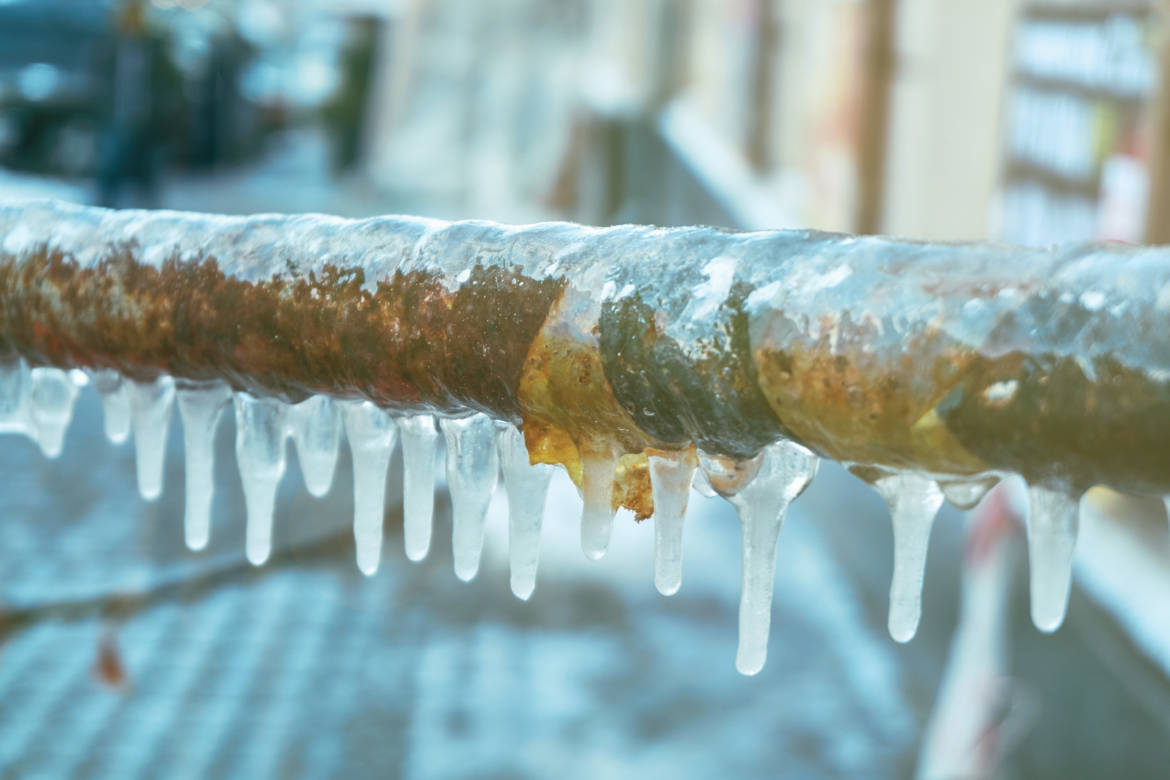Prevent Frozen Plumbing in Winter: Expert Advice
Prevent Frozen Plumbing in Winter: Expert Advice
Blog Article
This article down the page on the subject of How to prepare your home plumbing for winter weather is definitely interesting. Read on and draw your own final thoughts.

Winter can wreak havoc on your plumbing, particularly by freezing pipes. Here's how to prevent it from happening and what to do if it does.
Introduction
As temperature levels drop, the threat of icy pipes increases, possibly leading to costly fixings and water damage. Recognizing how to avoid icy pipelines is important for homeowners in cold environments.
Prevention Tips
Protecting at risk pipes
Wrap pipelines in insulation sleeves or make use of warmth tape to protect them from freezing temperatures. Concentrate on pipes in unheated or exterior areas of the home.
Home heating techniques
Maintain interior rooms appropriately heated up, especially areas with pipes. Open closet doors to enable cozy air to circulate around pipelines under sinks.
How to determine icy pipes
Search for lowered water flow from faucets, uncommon smells or sounds from pipes, and visible frost on subjected pipelines.
Long-Term Solutions
Architectural adjustments
Think about rerouting pipelines far from outside wall surfaces or unheated locations. Include extra insulation to attics, basements, and crawl spaces.
Upgrading insulation
Invest in top quality insulation for pipes, attics, and wall surfaces. Appropriate insulation helps maintain constant temperature levels and decreases the threat of frozen pipes.
Shielding Outdoor Pipes
Yard hoses and outside taps
Disconnect and drain garden tubes before winter season. Set up frost-proof spigots or cover outside faucets with protected caps.
Recognizing Frozen Pipelines
What creates pipelines to ice up?
Pipelines freeze when subjected to temperature levels listed below 32 ° F (0 ° C) for extended durations. As water inside the pipes ices up, it broadens, taxing the pipe wall surfaces and potentially creating them to break.
Dangers and problems
Frozen pipelines can cause supply of water interruptions, home damages, and pricey repairs. Burst pipes can flooding homes and trigger comprehensive structural damages.
Signs of Frozen Piping
Determining frozen pipes early can stop them from rupturing.
What to Do If Your Pipes Freeze
Immediate actions to take
If you believe frozen pipes, maintain faucets open up to eliminate pressure as the ice thaws. Utilize a hairdryer or towels taken in warm water to thaw pipes gradually.
Conclusion
Stopping icy pipes needs positive measures and quick actions. By recognizing the causes, indications, and preventive measures, home owners can protect their plumbing during winter.
5 Ways to Prevent Frozen Pipes
Drain Outdoor Faucets and Disconnect Hoses
First, close the shut-off valve that controls the flow of water in the pipe to your outdoor faucet. Then, head outside to disconnect and drain your hose and open the outdoor faucet to allow the water to completely drain out of the line. Turn off the faucet when done. Finally, head back to the shut-off valve and drain the remaining water inside the pipe into a bucket or container. Additionally, if you have a home irrigation system, you should consider hiring an expert to clear the system of water each year.
Insulate Pipes
One of the best and most cost-effective methods for preventing frozen water pipes is to wrap your pipes with insulation. This is especially important for areas in your home that aren’t exposed to heat, such as an attic. We suggest using foam sleeves, which can typically be found at your local hardware store.
Keep Heat Running at 65
Your pipes are located inside your walls, and the temperature there is much colder than the rest of the house. To prevent your pipes from freezing, The Insurance Information Institute suggests that you keep your home heated to at least 65 degrees, even when traveling. You may want to invest in smart devices that can keep an eye on the temperature in your home while you’re away.
Leave Water Dripping
Moving water — even a small trickle — can prevent ice from forming inside your pipes. When freezing temps are imminent, start a drip of water from all faucets that serve exposed pipes. Leaving a few faucets running will also help relieve pressure inside the pipes and help prevent a rupture if the water inside freezes.
Open Cupboard Doors
Warm your kitchen and bathroom pipes by opening cupboards and vanities. You should also leave your interior doors ajar to help warm air circulate evenly throughout your home.

As an avid person who reads on Preventing and dealing with frozen pipes, I was thinking sharing that section was sensible. Sharing is good. Helping people is fun. Kudos for being here. Come back soon.
Go Company Report this page